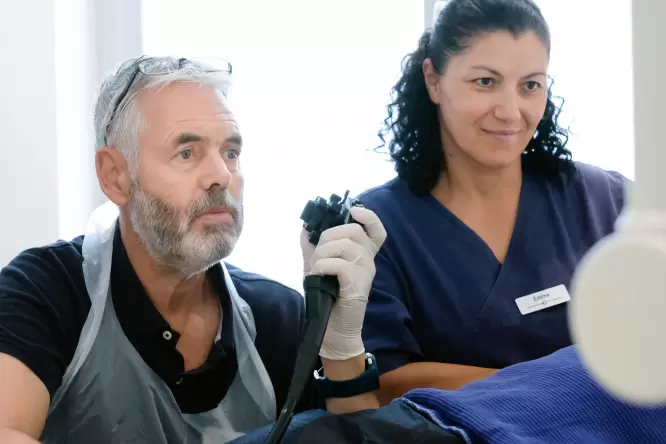Gastroscopy

Upper GI Endoscopy (Gastroscopy)
The upper GI endoscopy or gastroscopy is a diagnostic procedure for the upper digestive tract. With the help of a thinly callipered endoscope the inside of the esophagus, stomach and duodenum can be visualized. Special tools that slide through the endoscope allow the doctor to perform various additional procedures. Small biopsies can be taken from the mucosa with a biopsy forceps and microscopically examined, e.g. for diagnosis of a helicobacter infection.
Bleeding, e.g. from a stomach ulcer, can be stopped by injections of specific medications or through application of a metal clip.
Constricted areas (stenoses) can be dilated by use of the endoscope, with bougies or by insertion of stents.
The examination can be performed under sedation or with local anesthesia, depending on the preference of the patient.
When should a gastroscopy be performed?
→ e.g. for upper abdominal pain, heart burn, bloody vomitus, black stool, unexplained weight loss.